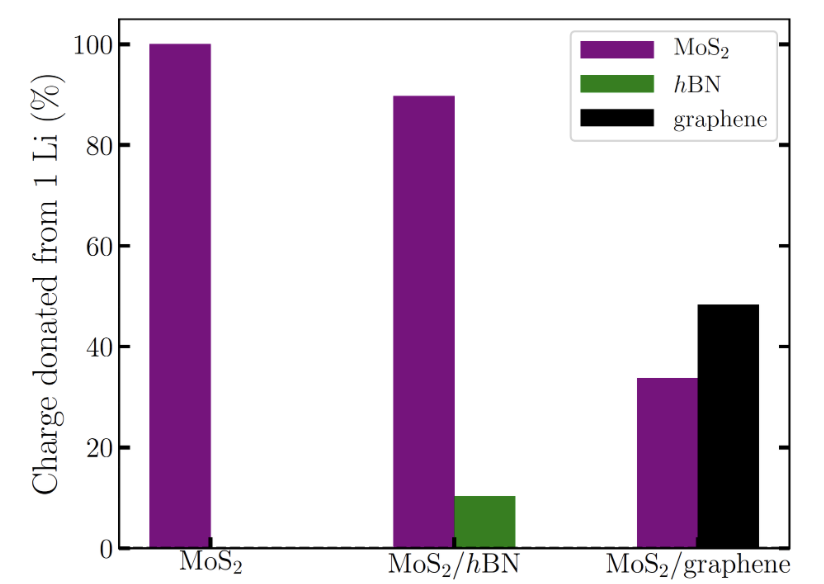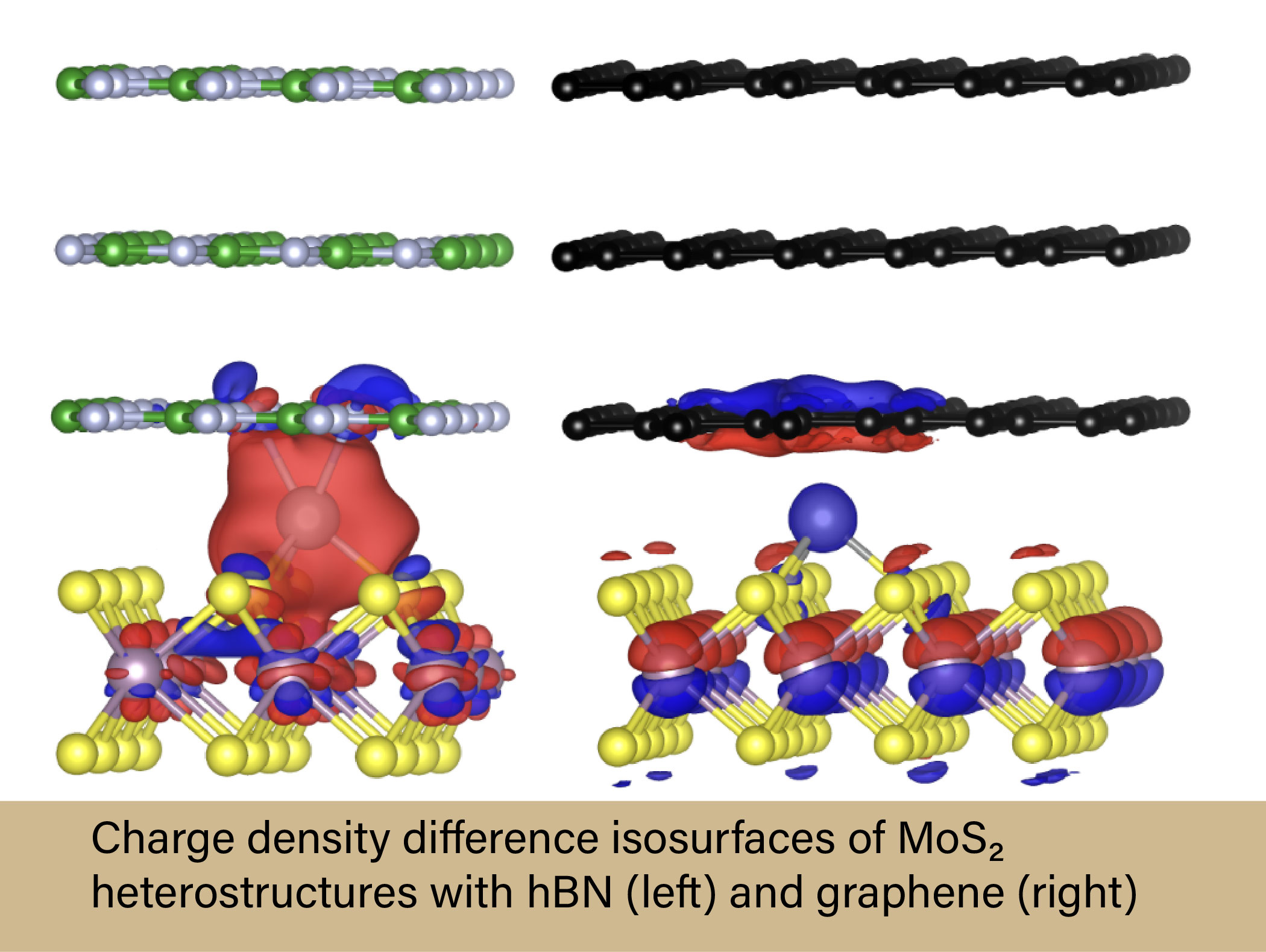Anvil helps Yale researchers in the search for batteries of the future
Purdue’s Anvil supercomputer has been helping researchers forge a path in developing the batteries of the future.
Dr. Aakash Kumar, a postdoctoral  associate in the Department of Mechanical Engineering and Materials Science as well as the Energy Sciences Institute at Yale University, utilized the powerful computational capabilities of the Anvil supercomputer to help his experimental collaborators explain a novel finding in the search for potential new materials for energy storage. Their research involved a combined experimental-computational investigation of lithium intercalation in heterostructures of quasi-2D materials. In this collaborative work, the experimental work was led by Dr. Josh Pondick and Prof. Judy Cha, who carried out laboratory experiments, while the modeling team carried out the computational work on Anvil to elucidate the results of those same experiments. The goal of their project was to understand how heterostructures—a single, layered structure created by stacking two different materials—could influence the phase transition caused by lithium intercalation (incorporation of Li within a host material, such as in the interlayer gaps of a 2D material), and whether this process could be controlled. Researchers can then use this knowledge to determine what combinations of heterostructures would work best for energy storage and how to optimize their construction, potentially leading to the creation of more stable and longer-lasting batteries.
associate in the Department of Mechanical Engineering and Materials Science as well as the Energy Sciences Institute at Yale University, utilized the powerful computational capabilities of the Anvil supercomputer to help his experimental collaborators explain a novel finding in the search for potential new materials for energy storage. Their research involved a combined experimental-computational investigation of lithium intercalation in heterostructures of quasi-2D materials. In this collaborative work, the experimental work was led by Dr. Josh Pondick and Prof. Judy Cha, who carried out laboratory experiments, while the modeling team carried out the computational work on Anvil to elucidate the results of those same experiments. The goal of their project was to understand how heterostructures—a single, layered structure created by stacking two different materials—could influence the phase transition caused by lithium intercalation (incorporation of Li within a host material, such as in the interlayer gaps of a 2D material), and whether this process could be controlled. Researchers can then use this knowledge to determine what combinations of heterostructures would work best for energy storage and how to optimize their construction, potentially leading to the creation of more stable and longer-lasting batteries.
For Kumar’s research, the team looked specifically at two-dimensional (2D) nanomaterials. 2D materials are essentially ultrathin “sheets” with a high surface-to-volume ratio, meaning they have large surface areas exposed where other atoms, such as lithium, can be intercalated . For purposes related to energy storage, researchers inject lithium ions into the layers of these 2D heterostructures and observe the associated phase change—specifically, they must know precisely where the charge (electron donation) from the lithium goes and how much lithium is required to initiate the phase transition. Ab initio quantum-mechanical calculations that run on supercomputers can be extremely useful in understanding such phenomena. This information is crucial for determining if certain materials are conducive to energy storage applications and how they could be later tailored for use in batteries. To quote Kumar and team’s research publication (Pondick et al. 2021), “To effectively exploit these phase transitions for these applications [batteries], understanding the thermodynamics and kinetics of the nucleation pathways is essential.” And so that’s exactly what the team set out to do.
Kumar used the Anvil supercomputer to compute the thermodynamics and electronic structure of MoS2/hBN and MoS2/graphene, utilizing a software called Quantum Espresso. MoS2/hBN is a heterostructure that combines molybdenum disulfide (MoS2) and hexagonal boron nitride (hBN), while MoS2/graphene is a heterostructure combining molybdenum disulfide and graphene. MoS2, hBN, and graphene have all shown to be promising materials for a wide range of electronics, including batteries. Comparing these two heterostructures with bare MoS2, the research team found that manipulating the heterostructure design of 2D materials is an effective strategy to control lithium intercalation, which could greatly aid the development of more stable, longer-lasting batteries.
After running his calculations,  Kumar found that graphene took roughly 50% of the charge donated from lithium, impeding the intercalation process, whereas hBN did not interfere, meaning that you must inject more lithium into the MoS2/graphene heterostructure in order to see the same phase transition. This information is crucial for researchers who want to develop 2D nanosheet batteries. In the end, Kumar and his team used Anvil to provide the first experimental evidence that different 2D nanomaterials can be used to control the lithium-induced phase transition in MoS2 nanosheets.
Kumar found that graphene took roughly 50% of the charge donated from lithium, impeding the intercalation process, whereas hBN did not interfere, meaning that you must inject more lithium into the MoS2/graphene heterostructure in order to see the same phase transition. This information is crucial for researchers who want to develop 2D nanosheet batteries. In the end, Kumar and his team used Anvil to provide the first experimental evidence that different 2D nanomaterials can be used to control the lithium-induced phase transition in MoS2 nanosheets.
Anvil was extremely helpful in this discovery. Thanks to Anvil’s 128 cores per node, and up to 1TB of memory per node, Kumar and his team could perform their calculations much faster and more reliably than otherwise possible.
“In my mind, running calculations on Anvil is literally like striking a hammer,” says Kumar. “There is so much power.”
In this research,  Kumar uses ab initio quantum mechanical calculations to compute the changes in electronic structure of materials due to lithium intercalation to determine their suitability for solid-state battery applications. He found that on Anvil, he could complete his medium-sized calculations (~50-100 atoms) using one or two nodes, whereas on HPC systems he has used in the past, he needed to use many more. “There [on other HPC systems], in my experience, you tend to use more nodes, which is fine, but what happens is, when you use more nodes, there is a communication issue between the machines.” These communications issues led to what Kumar described as a bottleneck, slowing down the calculations and the research. But because Anvil has such a large number of powerful cores per node, he could avoid this communication bottleneck and complete all of his calculations using a smaller number of nodes, which saved him a lot of time.
Kumar uses ab initio quantum mechanical calculations to compute the changes in electronic structure of materials due to lithium intercalation to determine their suitability for solid-state battery applications. He found that on Anvil, he could complete his medium-sized calculations (~50-100 atoms) using one or two nodes, whereas on HPC systems he has used in the past, he needed to use many more. “There [on other HPC systems], in my experience, you tend to use more nodes, which is fine, but what happens is, when you use more nodes, there is a communication issue between the machines.” These communications issues led to what Kumar described as a bottleneck, slowing down the calculations and the research. But because Anvil has such a large number of powerful cores per node, he could avoid this communication bottleneck and complete all of his calculations using a smaller number of nodes, which saved him a lot of time.
Another benefit Anvil provided for Kumar and the research team was the large amount of memory per node. “Because there is so much memory associated with each core, I can let them work on more memory-intensive problems.”
Kumar went on to note that the Anvil technical staff were very helpful throughout his allocation. “I have to say that the support staff was amazing,” says Kumar. “One person [Ryan DeRue] helped me with this one particular thing I was trying for a few weeks, and he would reach out to me every few days to check in.” Ryan DeRue is a Senior Computational Scientist at the Rosen Center for Advanced Computing (RCAC). He works on the scientific applications team, building, testing, and optimizing the software that researchers use for their scientific workloads. In this instance, DeRue worked with Kumar to customize the Quantum Espresso software and to ensure that the installation of this custom software was well-optimized for Anvil. Once this was completed, Kumar was able to use an alternative solver to enhance his calculations.
Anvil performed beyond expectations on this project, and Kumar and his team were thrilled with the system overall. They applied for a new allocation on Anvil and have been approved for another year. Click here to learn more about the team’s research.
More information about Anvil is available on Purdue’s Anvil website. Anyone with questions should contact anvil@purdue.edu. Anvil is funded under NSF award No. 2005632.
References
Pondick, Joshua V., Aakash Kumar, Mengjing Wang, Sajad Yazdani, John M. Woods, Diana Y. Qiu, and Judy J. Cha. 2021. “Heterointerface Control over Lithium-Induced Phase Transitions in MoS2 Nanosheets: Implications for Nanoscaled Energy Materials.” ACS Applied Nano Materials 4 (12): 14105–14. https://doi.org/10.1021/acsanm.1c03402.
Written by: Jonathan Poole, poole43@purdue.edu
